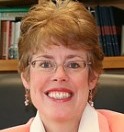CIO at Group Health Cooperative, Sue Kozik, recounts her job interview strategy and decision to become their next IT leader.

Our interview with Sue Kozik, who became EVP & CIO at Group Health Cooperative in July 2014.
How did you initially hear about the CIO opportunity at Group Health  Cooperative?
Cooperative?
Good CIO jobs don’t necessarily get advertised or posted. I heard about this through an executive recruiter. I am a huge networker. I spend a lot of time keeping in touch with people, and learning from them. It is often said that the CIO job can be very lonely, and I certainly agree with that observation. When I am wrestling with a tough decision or a complex question, my sounding boards can often be outside my company. I think that it is important to network with executive recruiters also, to help with them referrals when you can, and to participate in their blogs and panel discussions because then they know you better and remember you when the right position lands on their desk. That is what happened in this case.
What was it about this opportunity that caught your attention?
Group Health is an integrated delivery system, both an insurance provider, or payer, and a healthcare provider through our medical centers. I like to use the hockey metaphor: Group Health is where the puck is going. The integrated delivery system, or IDS, is where things are headed in the healthcare industry.
As I was researching how those two sides of the industry, payer and provider, were becoming more integrated, I realized that IT was the ‘glue’ that could help bring the two together. Healthcare payers and providers each have different processes and cultures but the same overall goals. Both are looking to be more efficient, to make better decisions, and to use analytics and systems to keep people healthier.
This transformation and the opportunity to truly be a strategic partner really got me excited and interested in learning more about the job.
What did the hiring committee at Group Health find most attractive about your professional background?
Group Health had not had a CIO for about a decade, and I had been the CIO in organizations that had never had one before. At TIAA-CREF, on the day I started I had 23 IT departments working for me because each product line had its own IT team. Penn Mutual had never had a CIO either. To the hiring committee, I think that having someone who could restart the CIO function was appealing, someone experienced with bringing the constituencies together.
How did you prepare for your interviews?
All of my industry experience is on the payer side, so I actively sought out people who could teach me more about the IDS business model. I networked with people in this specific region, Seattle, Washington, to learn about the market here. I asked for opinions on how Group Health would grow and stay ahead. What would be our biggest challenges as an organization?
During my meeting with each interviewer, I made sure I drilled deep into two key questions:
- Why are you restarting the CIO role? and
- What do you mean when you say a ‘strategic CIO’?
Were there any surprises during the interview process?
It was a very pleasant surprise to learn that 50% of doctors’ interaction with patients at Group Health is electronic. Doctors haven’t always been willing to change how they practice medicine, so I took that level of technology adoption and literacy as a very positive sign, and an indicator that IT could take things even further.
Who do you report to in the organization?
The President and CEO.
How did you prepare to start your new role?
I devised a plan for what I wanted to accomplish in the first 3-6 months, with focus on a listening tour that would help me to understand what is working and where the opportunities were for IT to contribute in a more strategic fashion to the goals of the enterprise. My concurrent focus was to take stock of our assets—people, application systems, infrastructure, etc. and then create an IT Roadmap that supported our newly refreshed three year business strategy.
What steps did you take to learn the business and build relationships across the enterprise?
I was fortunate to start in my new role just as the fiscal 2015 planning meetings were getting starting, so I inserted myself into those meetings.
Now I spend 50 percent of my time with my business peers. My advice to others is not just to say that you spend half your time with the business, but to make sure your calendar reflects that.
What organizational changes did you implement?
I did not plan on any immediate major changes, but right before I started, one of my direct reports had to leave the company for personal reasons. Then another direct report left for a great career opportunity soon after I started. I approached these changes as an opportunity to shape the future of the IT organization, and to put my stamp on the team, albeit a little earlier than I had planned for.
What about the technology in place?
On technology, we have decided that for systems that are broken or not flexible enough to meet our business needs, rather than invest to fix them, we’re spending that money to go out and get something new—something that performs better, integrates more easily, costs less to maintain over the long run and flexes with us as we grow and evolve.
What does ‘digital transformation’ mean at Group Health?
It all starts with the stakeholder experience; members, patients, employers, brokers, consultants, and also regulators. Digital transformation means becoming easier to do business with, and providing the info those stakeholders want, when and where they want it, on whatever medium. It means satisfying our stakeholders where they choose to interact with us.
Digital channels are where people are living their lives. We have to respond, and the point of view of the consumer has to be our lens. I know who my favorite service providers are, personally—Starbucks, LL Bean, Nordstrom—and I want to emulate them. They remember me as a customer, remember my preferences. They save me time, and give me great choices. At Group Health we have to change the way we interact with our customers. I like to say that rather than B-to-C, it’s C-to-B. The days are gone where we can shape how we want to work with consumers. Other industries have led the way with positive consumer experience and the healthcare industry, albeit far more complex than retail, needs to adjust to the way customers want to interact with us.
What advice would you offer to those about to embark on a CIO job search?
It’s really important at the senior level, where the expectations aren’t always clearly stated, to first think about what you are really looking for. What makes you get out of bed in the morning? What type of job would be satisfying to you? Most of us do this type of work because, yes, we need a paycheck, but for other reasons too. Hold a mirror up to yourself. Call in a few of your friends who know you and ask them to be brutally honest about your strengths versus your flat spots. You’ll have a better chance of finding a job you will happy and successful in.
About Sue Kozik
Sue Kozik is executive vice president and chief information officer (CIO) at Group Health Cooperative. Kozik has more than 30 years in information technology experience across a diverse mix of service industries. Most recently, she was senior vice president and CIO at Independence Blue Cross in Philadelphia. She has also served in executive roles at TIAA-CREF, Lucent Technologies, and CIGNA. Kozik graduated with a bachelor's degree in history from Bates College. She currently serves on the Bates College Board of Trustees, the TaaSera Board of Directors, and Tech Impact's Board of Directors.
About Group Health Cooperative
Group Health Cooperative is a member-governed, nonprofit health care system that coordinates care and coverage. Founded in 1947 and based in Seattle, Wash., Group Health and its subsidiary health carriers, Group Health Options, Inc. and KPS Health Plans, serve more than 600,000 residents of Washington and North Idaho.


Add a Comment